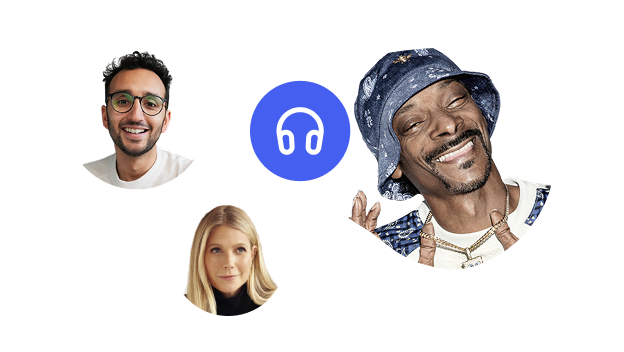The ultimate guide to assistive technology in special education
People with special needs and disabilities can struggle to perform the same tasks as everyone else. Naturally, special education and support programs can help. However, teachers and caregivers can’t assist people with disabilities without the proper tools.
Alternative education methods are necessary to help special needs students and give them the same advantages as their peers. In terms of modern solutions, assistive technology plays a significant role.
This article is the ultimate guide to assistive technology in special education.
What is assistive technology?
Assistive technology or AT can refer to anything that enhances a person’s learning abilities, improves productivity or makes it easier to perform daily tasks. Here are some examples of technology tools:
- Products
- Software
- Equipment
- Systems
Almost anything, from digital services to a physical piece of equipment designed to assist people with disabilities, can qualify as assistive technology.
The benefits of assistive technology for students
Delivering educational equality
It’s no secret that students with learning disabilities struggle to keep up with their peers. Dyslexia, ADHD, mental health issues, physical mobility conditions, visual or hearing impairments, and other problems can prevent students from participating in educational programs.
As an alternative, students may need to enroll in individualized educational programs (IEP.)
However, people with disabilities can have the same learning opportunities with the proper support. Assistive technology offers broad and niche use tools for students and educators. The right assistive technology can make studying easier, increase motivation, etc.
Promotes independent learning
Not everyone is comfortable showing their vulnerabilities and disabilities. Some people need more assistance and care but won’t always accept it. Fortunately, assistive technology can give students more independence and privacy.
People can study independently and only request additional support when necessary. This can lead to a massive boost in self-confidence.
Help people spend more time on meaningful activities
Supporting people with disabilities isn’t easy for everyone. Introducing assistive technology solutions can lessen the stress and workload of caregivers. Moreover, it creates space and time for students, educators, and parents to enjoy meaningful activities.
As author Joan L. Green puts it in her book “The Ultimate Guide to Assistive Technology in Special Education: Resources for Education, Intervention, and Rehabilitation,” assistive technology helps therapists, families, and teachers find more effective solutions.
Text to speech software
Text to speech or TTS is adaptive software that converts text into audio. TTS Apps like Speechify and other word processors use this assistive technology to read content aloud for people with dyslexia, ADHD, autism, or visual impairment.
Another use of technology like TTS is the creation of webinars or podcasts from study materials, articles, and other documents. It can be a low-cost solution for many learning difficulties.
Magnifiers
Magnifiers, devices with large buttons, Braille displays, and other similar tools are vision-enhancing types of assistive technology.
People with disabilities like vision loss or impairment can use them to access modern digital resources and tools similar to everyone else.
Hearing aids
People with hearing disabilities may use hearing aids, phone amplifiers, specialized apps, cochlear implants, etc.
These products can improve auditory comprehension and make certain daily living and work activities easier. Anyone from kids to students to adults and the elderly can benefit from hearing aids and similar AT products.
Voice amplification
Some people suffer from speech impediments or have poor literacy skills. In these situations, voice amplification systems, speech output software, and speech-generating assistive technology devices may offer support.
These devices can enhance remote and face-to-face communication, thereby improving work, personal, and social interactions.
Voice to text software
Voice to text software programs are fantastic pieces of assistive technology for people with mobility issues. They can make modern devices more accessible and allow users to browse the web, use apps, place calls, and perform various other tasks seamlessly by converting voice to text.
How to choose the right assistive technology
One of the fastest ways to identify the correct assistive technology tool for you is to do search engine research. Reading specialist blogs, journals, articles, and guides will help you understand your condition and how to manage it.
In addition, you can talk to healthcare professionals and assistive technology consultants. A consultant is a qualified individual that can guide you toward the best AT solutions.
Furthermore, you may visit a local assistive technology resource center. And you can always seek help from the following organizations:
- The American Occupational Therapy Association (AOTA)
- The Learning Disability Association of America (LDA)
- The Council for Exceptional Children (CEC)
- The Rehabilitation, Engineering & Assistive Technology Society of North America (RESNA)
You can find more organizations, some particularly focused on specific AT products and services, with some online research.
But the secret to getting the right assistive technology is understanding your condition, the best ways to manage or treat it, and the product details of what you want to use.
Speechify is a text to speech technology that helps with reading
Assistive technology tools come in many forms and text to speech software is one of the most versatile. For example, Speechify is a TTS reader initially developed for people with dyslexia. It has dyslexia-friendly fonts, adjustable narration playback speed, and multiple voices.
But a TTS reader can also help auditory learners, users with ADHD and apraxia, people recovering from eye surgery, the visually impaired, foreign language students, and many more.
Speechify can take almost any text in digital or physical format (scanned from hardcopy documents) and create audio files with unabridged narrations. The software works on any Apple, Android, and Windows device and offers multilingual support and many accents.
It’s the most realistic TTS reader with AI-generated voices that you can use for work, study, and entertainment. Try Speechify on an iPad, smartphone, or computer and make your favorite devices and content more accessible.
FAQ
What is an example of a piece of assistive technology?
Text to speech readers like Speechify qualify as assistive technology tools. They can help people with reading disabilities improve their literacy skills and visually impaired people read a text without Braille displays. Audiobooks like those found on Amazon and Goodreads are products developed through assistive technology.
What is the purpose of a hearing aid?
Hearing aids make certain sounds or frequencies louder so people with hearing loss can communicate easier and engage in daily activities.
What are some different types of disabilities that require the use of assistive technology?
Dyslexia, ADHD, apraxia, autism, and other disabilities can make reading and developing proper verbal expression challenging without assistive technology tools.





